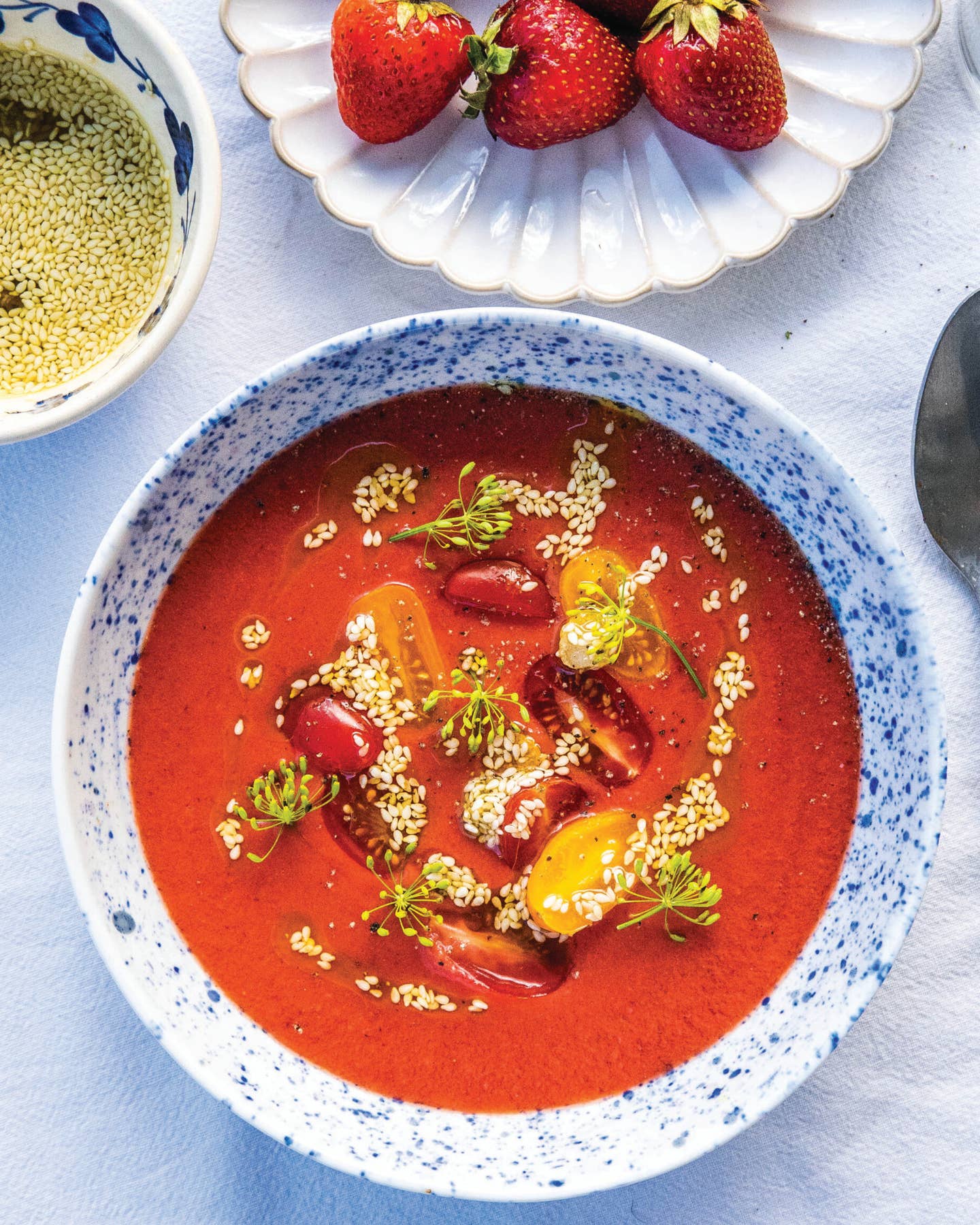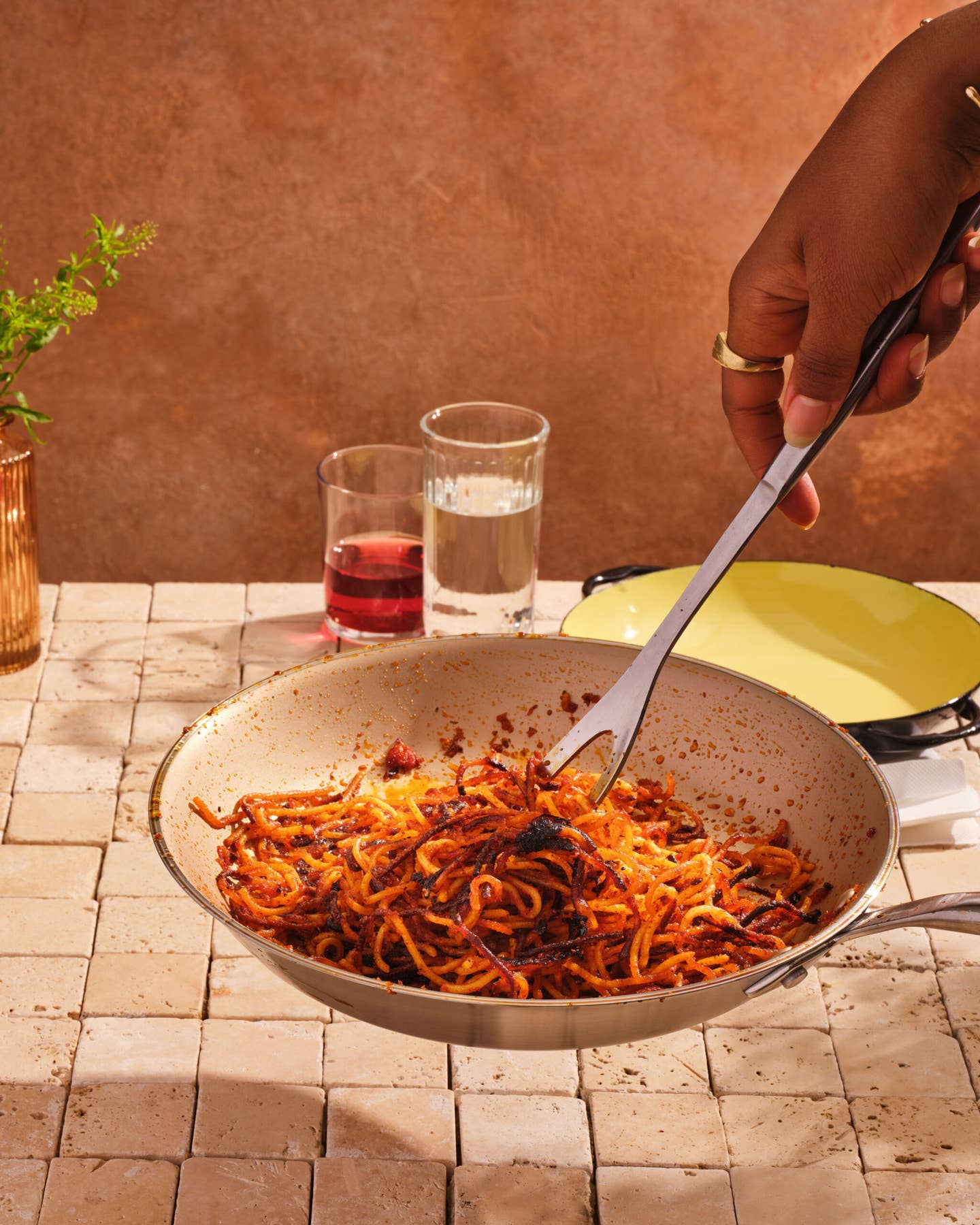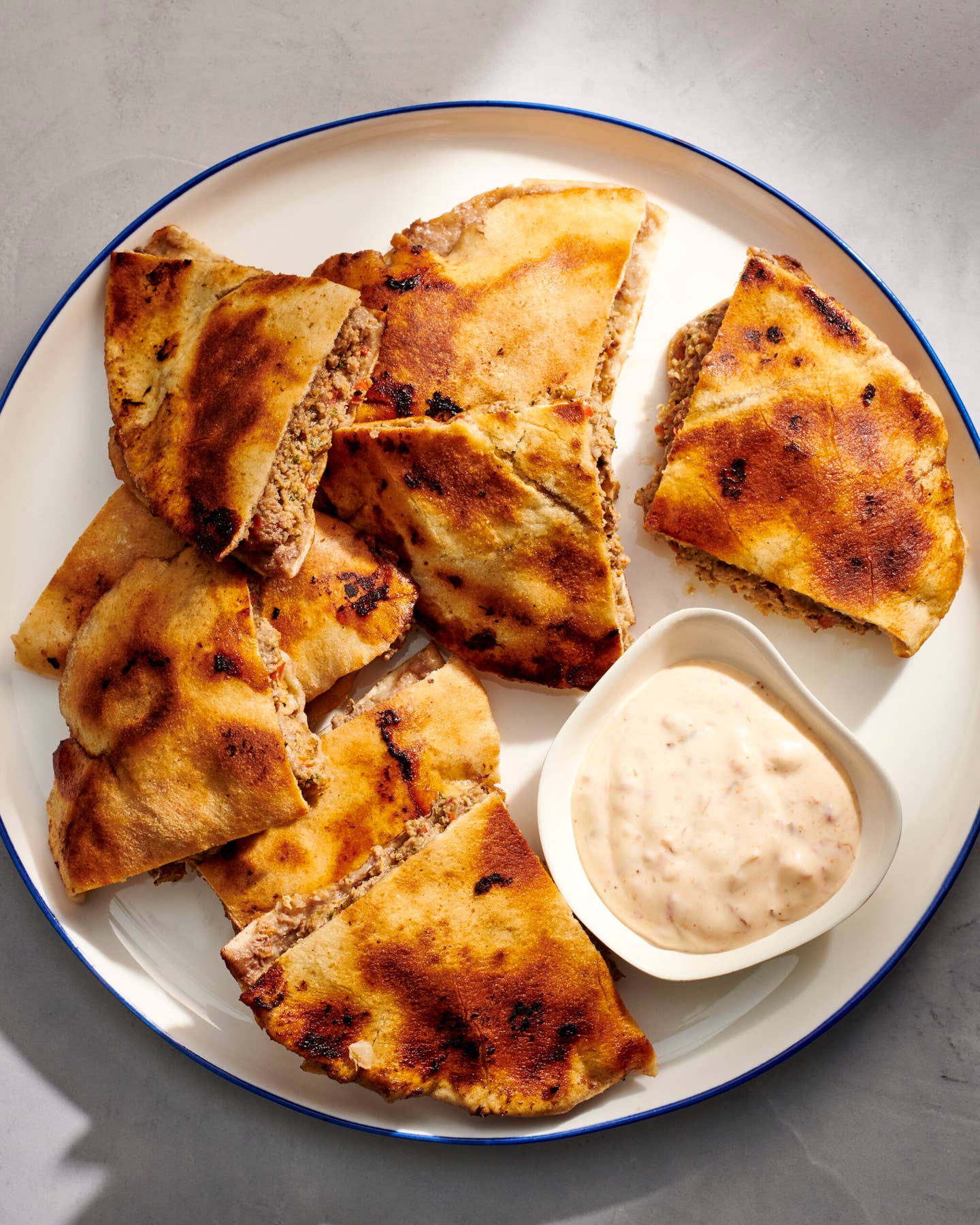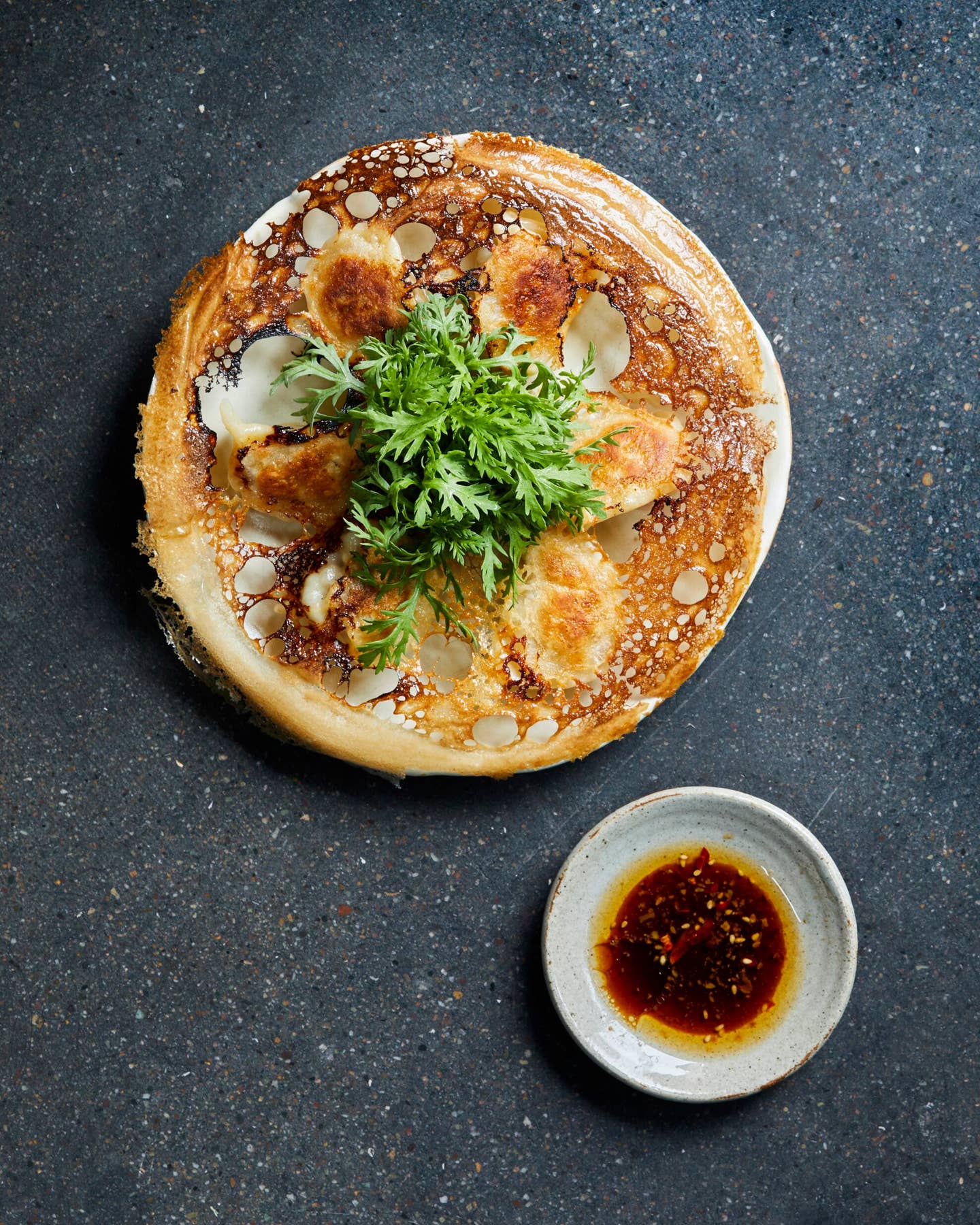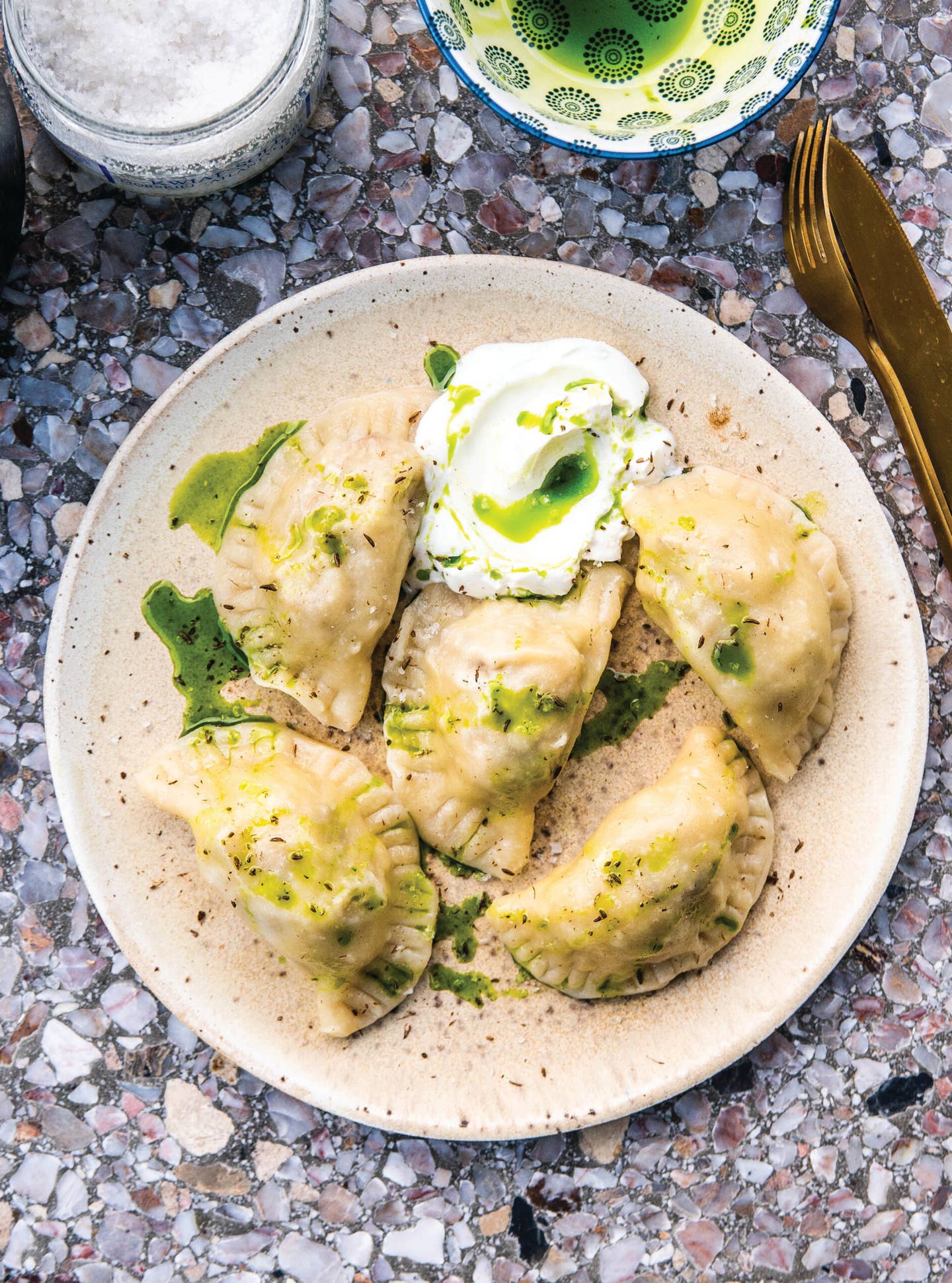Efo Riro (Nigerian Stewed Greens)
Fermented locust beans lend their particular savory richness to this traditional West African dish.
- Serves
serves 6
- Cook
1 hour 50 minutes
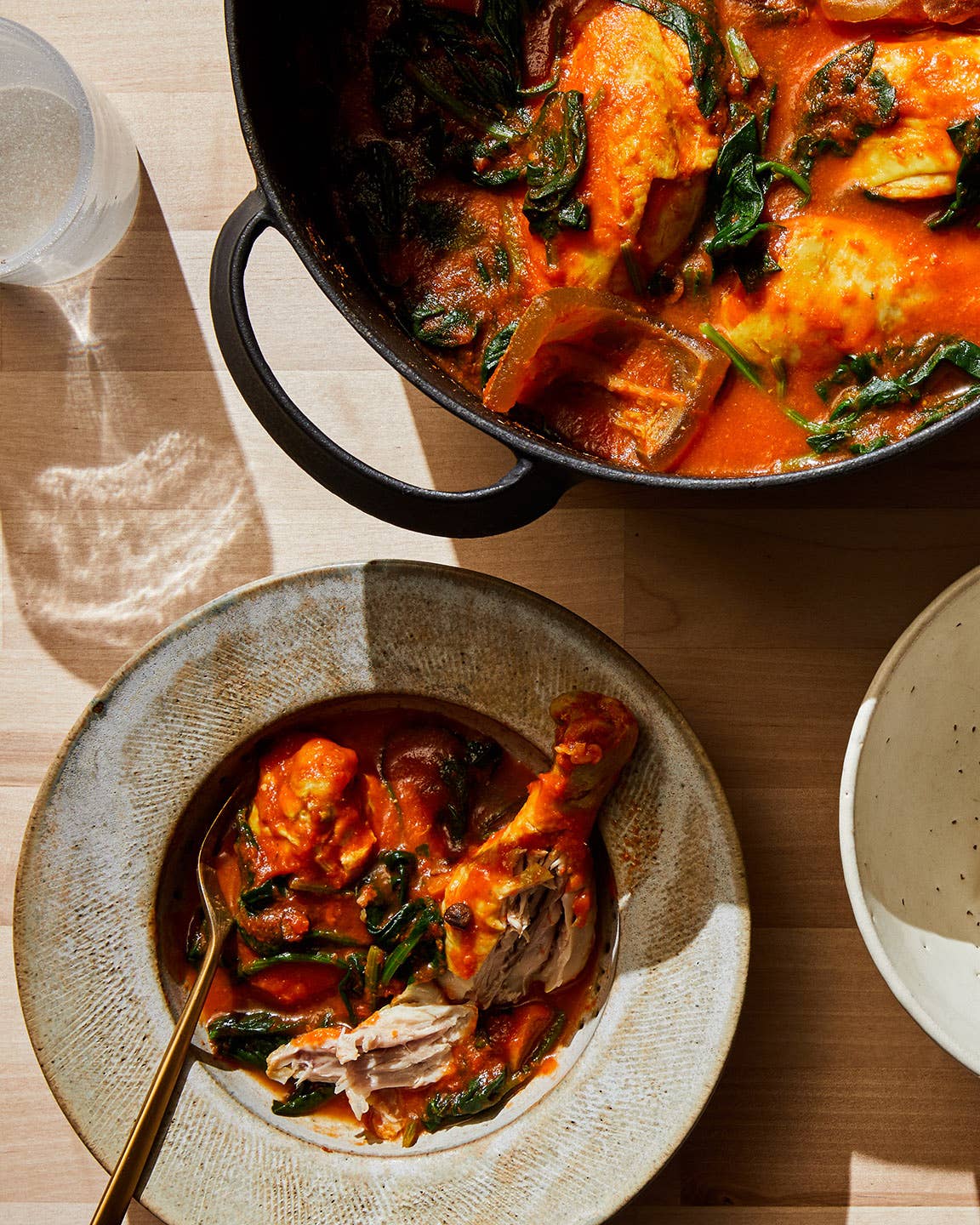
In the language of the Yoruba people of Western Nigeria, efo riro means “stirred leaf.” This comforting stew is traditionally made with shoko leaf, a mild bitter green common in the area, however ordinary spinach makes a suitable substitute. This recipe, which is adapted from Tola Akerele’s The Orishirishi Cookbook, can be made with either oxtail, goat, or bone-in chicken pieces. Find the smoked and dried fish (typically catfish), ground crayfish, and ponmo at your local African market or online through Osiafrik; fermented locust beans (known as iru in Yoruba) may be ordered dried from Burlap & Barrel. Efo Riro is traditionally eaten with swallows— starchy sides like cooked and pounded cassava or yam—but it can also be enjoyed with rice or any other cooked grain.
Featured in “West Africa’s Best-Kept Secret.”
Ingredients
For the chicken:
- One 3¼-lb. whole chicken, cut in 10 pieces
- 2 medium yellow onions, coarsely chopped
- 3–4 Scotch bonnet chiles
- 1 smoked and dried fish, such as catfish
- One 1½-in. piece fresh ginger, coarsely chopped
- 3 medium garlic cloves, coarsely chopped
- 3 chicken bouillon cubes
- 2½ tsp. kosher salt
- ¾ tsp. curry powder
- ¾ tsp. freshly ground white pepper
- ¾ tsp. dried thyme
For the stew:
- 8 large red bell peppers, stemmed, seeded and coarsely chopped
- 5 medium plum tomatoes, coarsely chopped
- 2 medium yellow onions, coarsely chopped
- 5 Scotch bonnet chiles, stemmed, seeded, and coarsely chopped
- 2¼ lb. shoko leaf (or substitute fresh spinach), cleaned
- Kosher salt
- 3½ oz. ponmo (dried cow skin)
- 3½ oz. stockfish
- ¼ cup plus 2 Tbsp. ground crayfish
- 3 Tbsp. iru (fermented locust beans)
- 2 Tbsp. palm oil
- 2 Tbsp. vegetable oil
- 2 chicken bouillon cubes
- 1 oz. smoked and dried fish, such as catfish
- Cooked pounded yam, white rice, or whole grains, to serve
Instructions
Step 1
Step 2
Step 3
Step 4
Step 5
Keep Reading
Continue to Next Story



